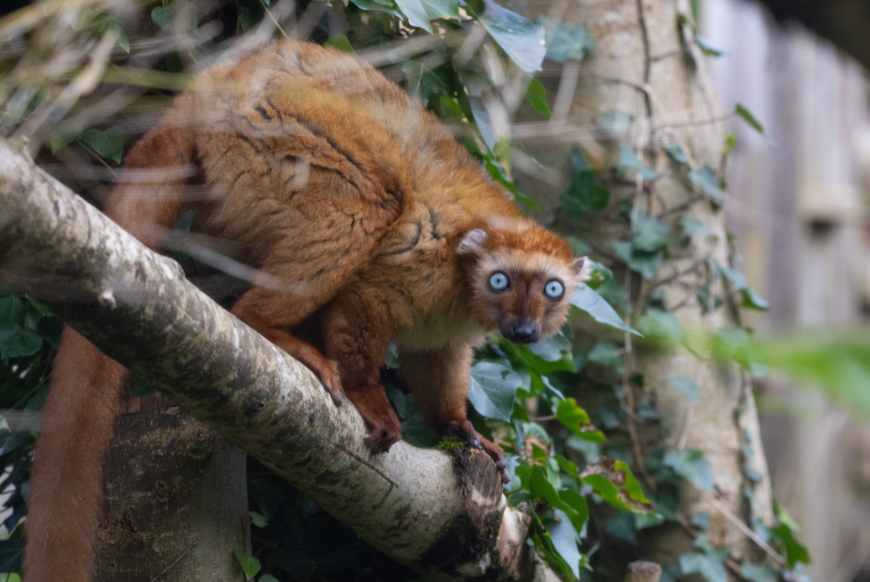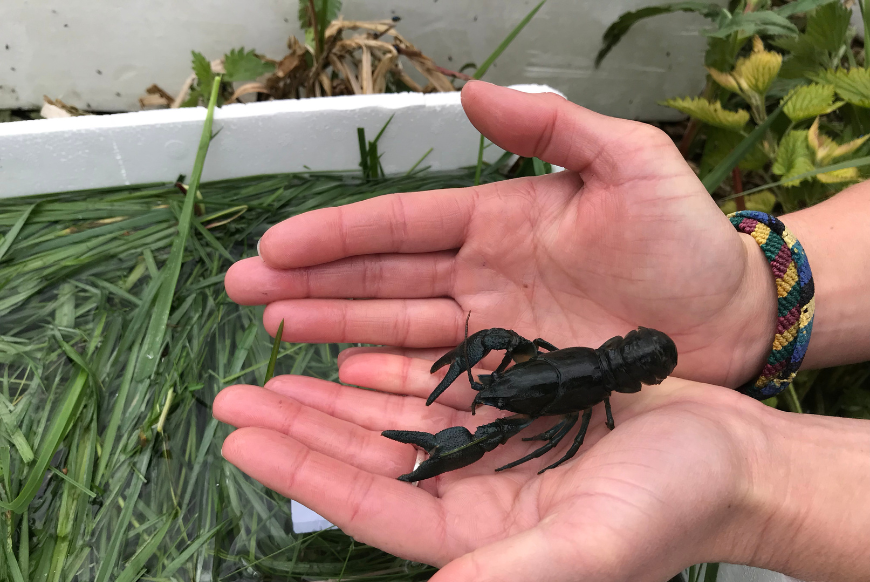Conservation and education charity Bristol Zoological Society is pledging to conserve and protect dozens of species on the brink of extinction, which it’s working with in the UK and around the world.

Image - Olanna, female blue-eyed black lemur at Bristol Zoo Project credit: George Cuevas
The 97 species include threatened birds, fish, reptiles and amphibians, as well as larger mammals such as gorillas, giraffe and lemurs, which all have one thing in common – they’re facing major threats in the wild.
As part of the pledge, the charity will champion six flagship species, shining a spotlight on those lesser-known animals particularly in need of help.
They include Critically Endangered blue-eyed black lemurs, which the charity is working to protect in Madagascar. A male and female pair, Haja and Olanna, live at Bristol Zoo Project and are part of the European Ex-situ Programme (EEP), a conservation breeding programme which the Society is involved in.
The other species it’s focusing on are:
- The Critically Endangered turquoise dwarf gecko, a tiny species of lizard found in the Kimboza Forest Reserve in Tanzania, East Africa. The charity is partnered with local conservationists there, assisting with reforestation efforts to increase abundance of the tree species on which the geckos live. It’s also been breeding them at the zoo since 2017.
- The Critically Endangered Negros bleeding-heart dove. Since 2014, the charity has worked with local partners in the Philippines on the captive breeding and reintroduction of the species on the island of Negros, as well as supporting ranger patrols and biodiversity surveys in the Northwest Panay Peninsula Natural Park (NPPNP), the species’ last stronghold in the wild.
- The Ankarafa skeleton frog, a Critically Endangered amphibian native to Madagascar. It is found only in a single small fragment of forest which the Society is helping to protect, along with developing a field station there to facilitate more research and conservation work in the area.
- The Critically Endangered Corfu toothcarp, a freshwater fish native to Greece. The charity is leading the European breeding programme to conserve the species, and it has been bred successfully at the zoo as well.
- The white-clawed crayfish, an Endangered species native to the UK. The Society leads a hugely successful captive breeding and reintroduction programme from its hatchery in Bristol.

Image A white-clawed crayfish
Bristol Zoological Society’s Director of Conservation and Science, Brian Zimmerman, said: “This is an important moment for us as a conservation charity, as we pledge to reverse the decline of such a diverse range of species. We are currently working in nine countries across four continents and involved in 40 co-ordinated breeding programmes. We want to continue to build on this work.
“From Critically Endangered western lowland gorillas, which many people will know and love, to lesser-known birds, fish and amphibians, every species on this list needs our help to survive.
“We have chosen our six flagship species as they might be considered by some to be ‘neglected species’ that need a champion to save them from extinction. They reflect the range of countries we work in and are from very small geographical locations, where with local partners, we work to save them from extinction. For those, we are leading the charge.”
The Society is making the Species Pledge to Reverse the Red, joining a global coalition of organisations focused on the survival of wild species and ecosystems. Reverse the Red is jointly run by the International Union for Conservation of Nature (IUCN) and the World Association of Zoos and Aquariums (WAZA) and is about to host the first ever World Species Congress on May 15, where the pledges will be shared.
To coincide with its pledge, the Society is launching a new fundraising appeal, Fighting Extinction. It’s calling on supporters to join its mission to protect animals and habitats that are most at risk and help fund its worldwide conservation work.
Brian Zimmerman continues: “At our Bristol Zoo Project site in South Gloucestershire, 78% of the animals we care for are both threatened, and part of targeted conservation programmes - our aim is for this to rise to 90% by 2035.
“From breeding threatened red panda to funding local rangers who are protecting Critically Endangered Kordofan giraffes in Cameroon, our teams are doing everything they can to help secure a sustainable future for wildlife, but we can’t do it alone. We hope people will support our pledge and appeal and join us in Fighting Extinction.”
The Reverse the Red Species Pledge comes at a pivotal time for the Society as it is creating a new conservation zoo at Bristol Zoo Project. The first phase is due to begin in the next few months and will see the creation of a new Central African Forest habitat, which will become home to the zoo’s existing troop of Critically Endangered western lowland gorillas. They’ll be joined by Endangered cherry-crowned mangabeys, Critically Endangered slender-snouted crocodiles and Endangered African grey parrots, along with several extremely threatened species of West African freshwater fish.
To find out more about Bristol Zoo Project and Bristol Zoological Society’s conservation programmes across the globe, visit www.bristolzoo.org.uk.
Related
Comments
Comments are disabled for this post.













